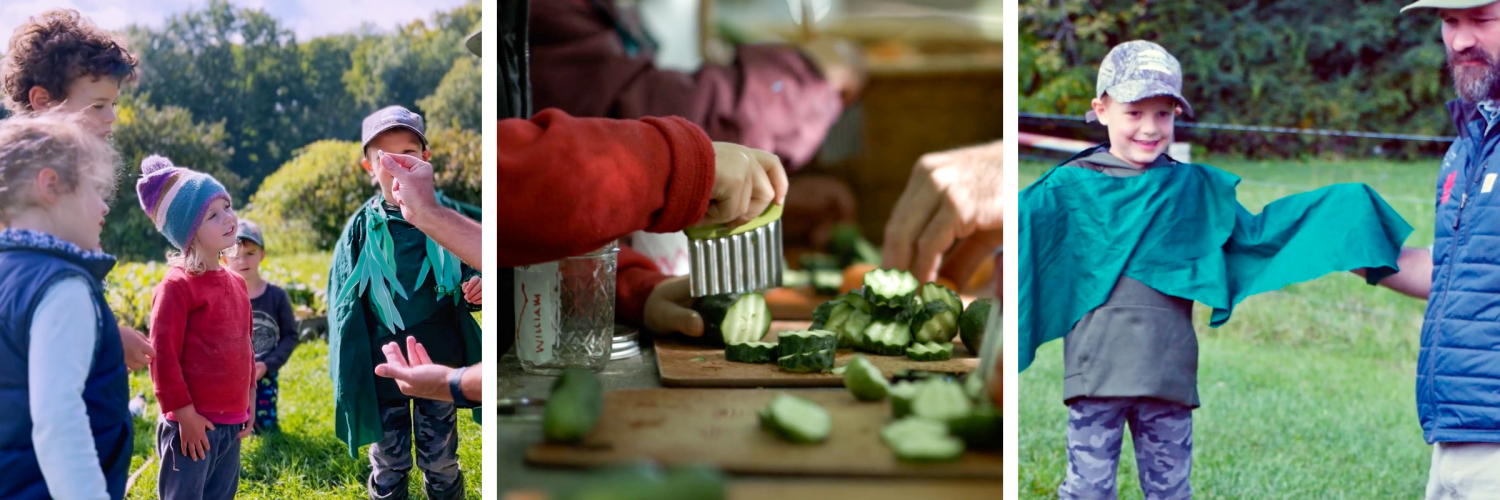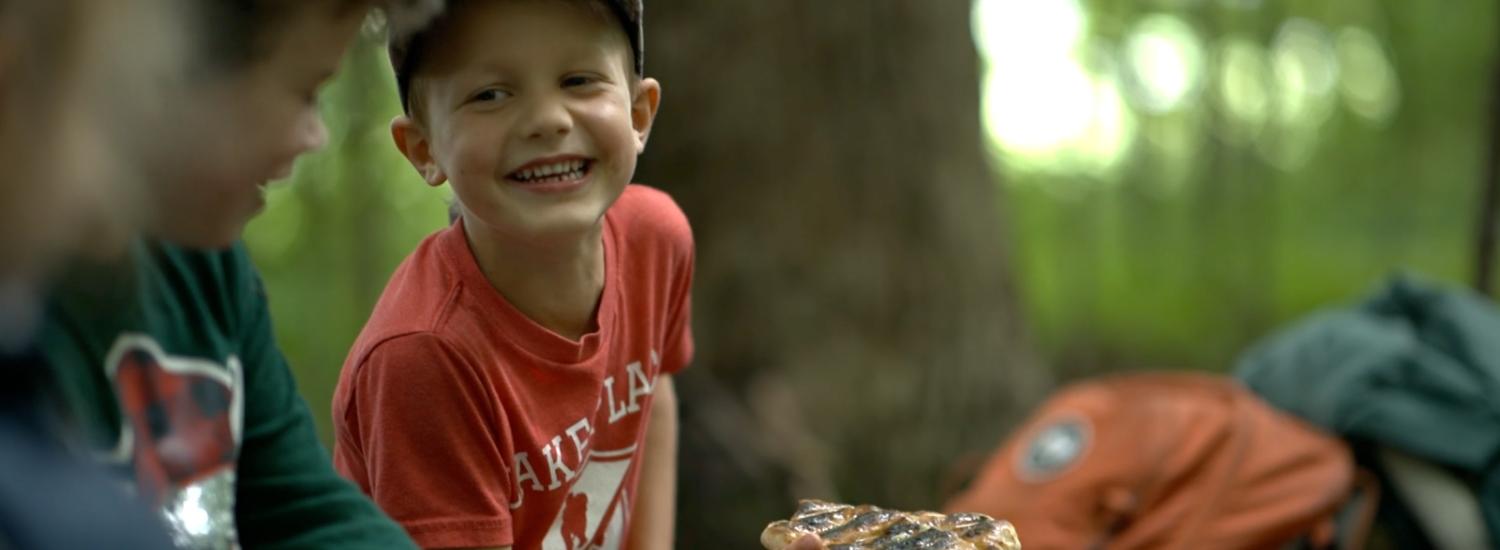Do you know the bean plant’s super power? We’re sharing an interactive game to teach young learners about a plant’s parts, what function each plays, and how a bean goes from seed to fruit. Follow up this garden exploration with a quick pickle activity to extend the shelf life of the garden harvest and introduce new flavors and spices to vegetables.
What You’ll Need for the Dress Up a Plant Activity
- Straws tied to a string
- Two large green cloth or paper leaves
- Large white cloth or paper petals made into a necklace
- Several large green paper string beans
- Bee puppets
Resources
- The activities featured in this video are based on these from Shelburne Farms’ Cultivating Joy & Wonder: Dress Up a Bean Plant, Sweet as a Bee, and Let’s Make Pickles.
- Happy Kids Kitchen: Teaching Knife Skills to Toddlers & Kids
- For a related extension activity try The Fabulous Five, also from Cultivating Joy & Wonder.
Explore the Series
This video is one of a three-part series highlighting some of our favorite farm to early childhood classroom activities and how they can easily integrate into your program. Hosted by Shelburne Farms educators Jed Norris and Hannah Corbin, these how-to videos explore outdoor, place-based learning; cooking with kids; and extending children’s knowledge of plants, food, and food systems.
A special thank you to Vermont early educators Jackie Reno and Chong Ho Kim of The Janet S. Munt Family Room (Burlington, VT) and Laura Butler of Imagination Island (Milton, VT) for lending their perspectives and farm to early childhood wisdom.
This video series is a project of the Vermont Farm to Early Childhood Coalition, an Action Team of the Vermont Farm to School & Early Childhood Network. The project was supported by the Association of State Public Health Nutritionists through the Centers for Disease Control & Prevention.

The Association of State Public Health Nutritionists' Farm to ECE grantee programs are supported by the Centers for Disease Control and Prevention (CDC) of the United States (U.S.) Department of Health and Human Services (HHS), as one of several projects funded by cooperative agreement number NU38OT000279 (total of $6,320,000). This resource was supported by ASPHN's Farm to ECE grantee program, which is funded by the Division of Nutrition, Physical Activity and Obesity (DNPAO)/ National Center for Chronic Disease Prevention and Health Promotion (NCCDPHP)/CDC/HHS. The contents of this resource are those of the author(s) and do not necessarily represent the official views of, nor an endorsement by DNPAO/NCCDPHP/CDC/HHS, or the U.S. government.
